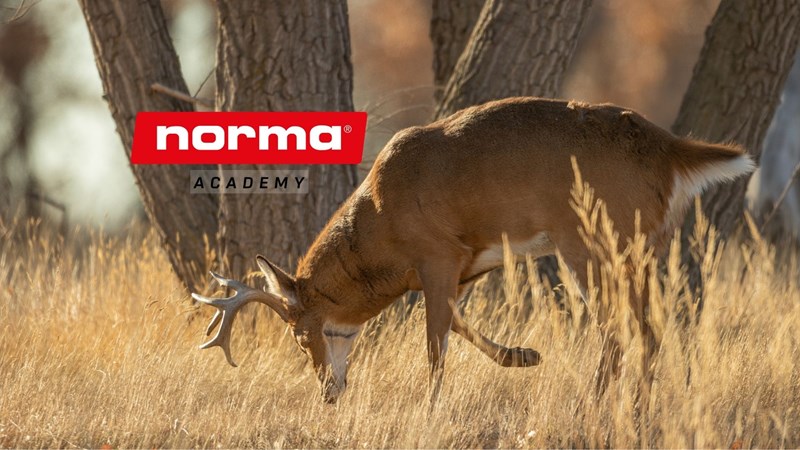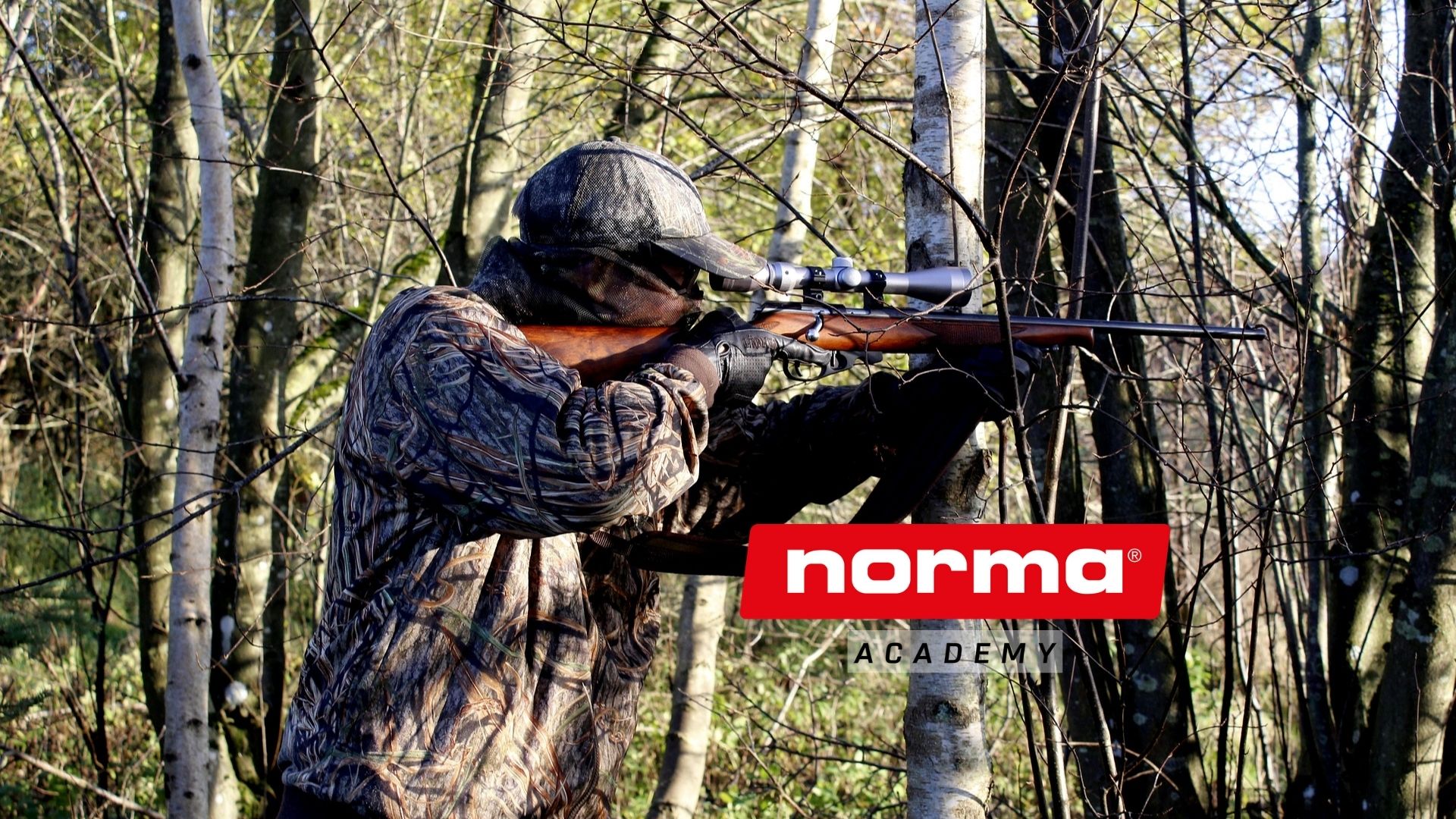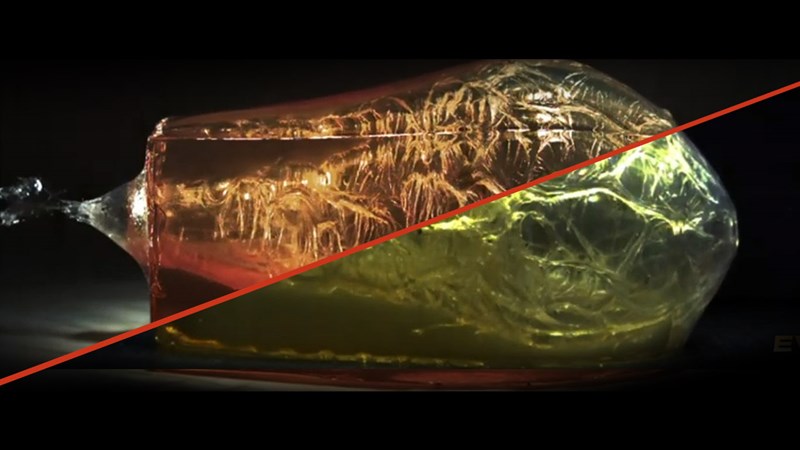
Norma Bondstrike 6,5 Creedmoor 143gr
Range
Wound Channel
Penetration
Stopping power
White-tailed deer are an interesting type of game to select the proper ammunition for. As medium sized game and herbivores, they are not particularly tough game that require special ammunition. On the other hand, whitetails are known to to travel a bit even after being struck with a competent projectile and shot placement at high velocities and energies. Anothe thing to consider is the purpose of the hunt as whitetails are very populous in certain areas with resulting damages to the environment and risk of disease outbreaks. If the whitetail hunter is looking to harvest a trophy, meat or looking to conduct some wildlife management with targeted culling of weak or old deer then the choice of ammunition will also be different. There might also be legal considerations such as lead prohibition and other requirements to pass to be able to harvest a whitetail. Finally, personal preference, performance and equipment are also to be considered as there is no use in using ammunition that does not work well with a particular barrel or silencer.
The first thing to consider for a good selection of white-tailed deer ammunition is what caliber you will be shooting. Depending on the budget of course, a hunter might not have a dedicated whitetail deer rifle. If one imagines no such constraints, the choice of caliber tends to be on the smaller side because a rifle that is meant to handle multiple types of game usually needs to also have room to ethically take down bigger game.

For a specialized rifle that is dedicated to a particular species of game like whitetails, the caliber needs to be just powerfull enough to ethically and efficiently dispense with the various individuals of whitetails that you can encounter but not exceed that level of power so as to incurr too much damage. As whitetails are medium sized game, they tend to be legal for only class 1 type of calibers, which are your 6.5mm calibers and above. In some jurisdictions it can be legal with a class 2 such as a 5.56mm, but not all hunters report success with it and it may not be legal to hunt with in many places. The 243 Winchester, which is a 24-caliber or 6mm bullet, is class 2 caliber that is world famous for taking down numerous big whitetails. 6.5mm calibers are therefore a good starting range for calibers suitable for white-tailed deer hunting. If we look at the upward bounds of what maximum caliber range for whitetails could be, probably the 8mm calibers such as the popular 8x57 could be a good maximum caliber size. A 7mm caliber like the trusty 7mm Remington Magnum is a perfect middle of the road candidate that offers you power, range and versatility on all whitetails. In 30-caliber or 7.62mm, something like the 308 Winchester shines as it is not quite as power-packed as a 30-06 Springfield or 300 Win. Mag. but still drives that 7.62mm bullet far and fast.
One advantage of the 6.5mm calibers and why they tend to be such popular deer rifle choices is the recoil. A 6.5 x 55 Swedish Mauser will not kick noticeably and this will result in higher accuracy in a hunting situation. Rather than thinking about 1 perfect shot, the deer hunter should be thinking about 2 good shots if needed, not just when hunting white-tailed deer. Modern cartridge designs like the 6.5 Creedmoor combined with advances in bullet and powder performance also allow you to take the deer rifle out to considerable distances. Another thing to consider is the bullet selection available in the caliber of choice for whitetails. A 6.5 Carcano will do a fine job, but the latest and greatest factory loaded ammunition might not be available readily for you. The reloader does not need to worry about these kinds of questions.

Pictured: In a hunting situation in close quarters and the pressures of difficult shots, less is some times more as less recoil means quicker 2nd shots for maximum safety.
Time to summarize what we have learned about calibers for white-tailed deer hunting:
White-tailed deer are not vastly different than their siblings in the deer family when it comes to what type of bullet works best. The two main groups of projectiles which will perform the best are expanding bullets and to a lesser extent fragmenting bullets. Fragmenting bullets are more of a niche choice in this regard for those who trully wish to maximize hydrostatic shock, while expanding bullets of various designs will offer the most reliable and repeatable results. As we discussed on the section of calibers, we are most likely looking at 6.5 to 8mm bullets which means the suitable bullet weights for a lead bullet will be between roughly 140 grains to 190 grains. For copper bullets the same range of calibers is roughly between 90 grains and 160 grains.
As we talked about in the general article on expanding bullets here, there is not just one type of expanding bullet and thus multiple types of bullet designs are relevant to white-tailed deer. So when choosing a whitetail bullet, there are a number of factors to consider:
In the graphic below we have listed some different constructions of expanding bullets that we offer here at Norma. Can you identify them all? Can you identify which of them is an unsuitable option?
In the above selection, the .358 is the unsuitable option, as it is a full metal jacket (FMJ) and not an expanding bullet.
First off, the Ballistic Coefficient (BC) is a value that represents a bullets capacity to maintain speed and continue its motion through space. For long-range whitetail hunting, it becomes imperative to select a bullet that has a high BC value as you will need the bullet to maintain as much energy and speed as possible to be effective once it reaches its distance. Now the thing is, white-tailed deer is not long-range game everywhere in the world. Depending on your hunting grounds it can be quite irrelevant as you will need to maneuver thick terrain and sloped hills where the actionable shots are in the usual 0-200 yards that most hunters are used to. At that intervall of shooting distances, the BC value will be of lesser importance than many other factors. Should your hunting grounds be on the flatlands and wide open areas of the mid-west for example, now the challenges are different. Hunters who have no cover to sneak up on the white-tails often have no other options but to take long distance shots. Typical features of high-BC bullets are a marked ogive form, boat-tail and either a hollow point or polymer tip.
That is a great segway into what nose construction for whitetail ammo. The simple truth is that any construction that ensures a controlled expansion will work. This includes older designs such as round soft-nose bullets where the core of the bullet simply bleeds out in the front of the bullet. The drawback with these types of bullets is that typically the more modern body shapes and other bells and whistles of bullet design are not present in a soft-nose bullet. Another competent option is a folded nose which will give you excellent penetration before expanding. Polymer tips are available in various levels of complexity, where the older tipped bullets tend to be more violent as they are not as carefully engineered in the grooves to which the tip is fitted on the bullet's nose.
The use of silencers and silenced weapons systems has grown in popularity in recent times. Depending on your setup they can offer both noise reduction and a lighter recoil. As you shorten the barrel to accomodate the silencer on the barrel, the performance of your ammo changes. The same bullet loaded the same way in a particular cartridge will lose speed and energy as you shorten the barrel, which impacts both exterior and terminal ballistics. While it is not technically a bullet consideration but a cartridge consideration, if you use a silenced weapons system you should consider ammunition that has been engineered to perform optimally in such a configuration. We present below some apropriate choices for the whitetail hunter who employs the use of a silencer.
When talking about the penetrative characteristic of whitetail ammo, we are both concerned with the nose construction and the construction of the forward jacket of the bullet. A thicker mantle will mean that the bullet travels further through the whitetail before expanding, which means energy delivery comes on later and the projectile will be more likely to hold together. A thinner mantle promotes quicker and more violent expansion in the deer, which means more energy delivered at an earlier stage but you also are more likely to find a crumbled projectile. A good bullet will be optimized in its penetrative capacity with respect to energy delivery and projectile integrity. White-tailed deer like most deer species offer quite a soft broadside with exception for the skelletal structure of the shoulder. If you put your shots slightly behind the front leg and the shoulder complex, where you can impact both the lungs and the heart simultaenously, the bullet will easily penetrate the thin skin, weaker bones of the ribcage and fleshy structures of the whitetail. Penetration is mostly a characteristic you would look for if the shot placement is somewhat suboptimal, towards the bonier and denser area around the shoulder.
These two factors are by nature somewhat in the category of personal choice. Hydrostatic shock is the effect that appears in liquids when they are impacted, a phenomenon that also occurs in animal bodies as all living creatures consist of a large ammount of fluids. Upon bullet impact, a shockwave ripples through the body which, if violent enough, knocks out the target. There exists some confusion on this topic and for a closer examintion we have this article on terminal ballistics by Nathan Foster you can check out. For whitetails, any well made expanding bullet will offer you enough hydrostatic shock to ethically take down this species of deer. To maximize hydrostatic shock, some deer hunters use fragmenting bullets which are discussed further down in this article.
Residual weight is the retained mass of the bullet after it has done its job on the game. Many hunters prefer the residual weights to be high for purposes of harvesting the meat of game. It also acts as a further mechanism to prevent crumbling of the bullet if the impact is very violent such as with bony hits.
 Pictured: Ballistic Gel simulating game being struck by a bullet. Whitetail deer are mid sized deer with thin skins which are not terribly difficult to penetrate so a controlled expansion will perform well.
Pictured: Ballistic Gel simulating game being struck by a bullet. Whitetail deer are mid sized deer with thin skins which are not terribly difficult to penetrate so a controlled expansion will perform well.
The most common bullet material in deer ammo is lead, with a bullet jacket made out of gilding metal. As environmental concerns have grown in recent times and more people have rediscovered hunting as a source of high-quality food, more and more hunters are switching over to copper bullets, or copper bullets with zinc mixed in. Lead-free bullet designs have become more competent in recent years to meet the demand and new bans on lead ammunition. Copper bullets are less heavy than lead bullets and the metallurgic properties are different. The weight influences the sectional density and the ballistic coefficient of the projectile, so therefore most copper bullets are very carefully engineered with respect to their form factor to retain the performance versus a lead bullet. A modern copper bullet will perform beautifully on a whitetail deer.
A more niche choice than expanding bullets would be the fragmenting bullet type. These bullets are pre-cut at the nose to not only promote expansion but also induce pieces of the nose to splinter off and away from the bullet core. This creates an extremely violent impact and initial effect on the target. As parts of the bullet are now separated from eachother, the remaining core is somwhat smaller and therefore penetration is not as good as a traditional expanding bullet, so the trade off is quite simple. This type of ammunition is popular on medium sized game and especially during driven hunts. For whitetails this type of ammunition is suitable especially for hunters who prefer neck shots as the fragmenting effect gives your bullet a greater area of effect on a relatively small target like the vertebrae. At Norma, we offer the EVOSTRIKE as lead-free fragmenting bullet option which you can see below.
It is time to summarize what we have discussed so far on how to choose a proper bullet for white-tailed deer hunting.
Article written by Robert Goldberg,
